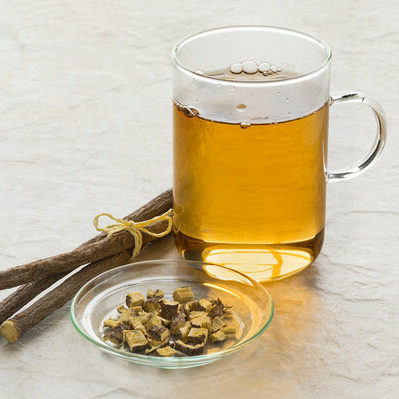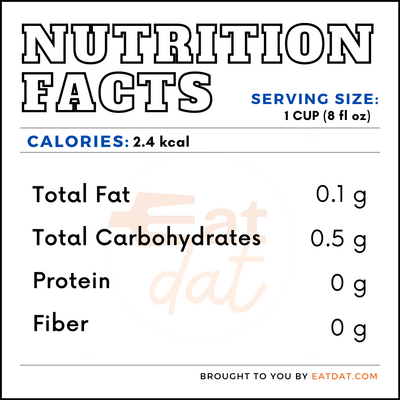
Licorice Tea
What is Licorice Tea?
Licorice tea is not actually a tea but an herbal infusion. Licorice is a root belonging to the Glycyrrhiza glabra family, which is employed as a flavoring agent in parts of Europe and Asia. This sweet and aromatic root is often used in liquid herbal concoctions, known as licorice tea.
- The infusion has a complex flavor with sweet, salty, bitter, and sour notes.
- This herbal tea is usually available in health food stores.
Some of the most popular tea brands are:
- Buddha Teas
- U.S. Wellness Naturals
- DelighTeas
- Teapigs
- Valdena Bio
- Pukka
Origin of licorice tea
The earliest evidence of licorice use is from China around 2300 BC when Emperor Shennong had the root recorded as a magic plant that rejuvenated old men. The root was popular in ancient India, ancient Egypt, and Assyria, as well. Licorice root was found in Tutankhamun’s tomb dating back to 1350 BC. Additionally, licorice was used extensively in Ayurvedic medicine in India. The name itself is derived from two Greek words combining ‘sweet’ and ‘root’ and was used extensively as a medicine in ancient Greece and Rome. Today, the popularity of the root has reduced, though it remains widespread in certain areas.
Nutrition
Nutritional profile for this tea (1 cup):

Also, licorice tea contains potassium, sodium, calcium, and iron. Licorice has been traditionally used for thousands of years as a medicine in different cultures. The root has a wide range of health promoting properties, such as antibacterial, anti‐inflammatory, antiviral, antioxidant, and antidiabetic activities. It is a rich source of proteins, amino acids, polysaccharides, flavonoids, and carbohydrates. In addition, licorice contains calcium, phosphorus, sodium, potassium, iron, magnesium, silicon, selenium, manganese, zinc, and copper.
The sweet taste of the licorice is due to the glycyrrhizin, a triterpenoid saponin that is 50 times sweeter than sucrose. However, consumption on a daily basis may lead to health conditions such as hyperaldosteronism, hypokalemia, and muscle weakness. Creatine phosphokinase (CPK) may be elevated in cases with rhabdomyolysis, which may be complicated with acute tubular necrosis. Furthermore, licorice may cause high blood pressure, plasma renin and aldosterone level, as well as reduction in the conversion of cortisol to cortisone. Due to these reasons, the recommended consumption is ½ cup a day.
Commercial production
The main licorice producing countries are India, Iran, Italy, Afghanistan, China, Pakistan, Iraq, Azerbaijan, Uzbekistan, Turkmenistan, and Turkey. Licorice tea is commercially prepared by combining dry licorice root with other herbal ingredients. Then, the dry blend is sold loose or in a teabag. It must be prepared by pouring hot water over the mix and letting it steep for a few minutes.
Licorice tea recipes
There are several different ways to prepare this tea. Here are a few recipes:
FDA regulations
The FDA regulates the supply and sale of licorice, and defines licorice root as the dried and ground rhizome and root portions of Glycyrrhiza glabra or other species of Glycyrrhiza. Licorice extract is defined as the portion of the licorice root that is, after maceration, extracted by boiling water and purified by filtration and by treatment with acids and ethyl alcohol. This may be sold in liquid, paste, or powder format.
References
Licorice Root, National Center for Complementary and Integrative Health, U.S. Department of Health and Human Services, https://www.nccih.nih.gov/health/licorice-root
Fiore, Cristina et al. “A history of the therapeutic use of liquorice in Europe.” Journal of ethnopharmacology vol. 99,3 (2005): 317-24. doi:10.1016/j.jep.2005.04.015, https://www.ncbi.nlm.nih.gov/pmc/articles/PMC7125727/
Pastorino, Giulia et al. “Liquorice (Glycyrrhiza glabra): A phytochemical and pharmacological review.” Phytotherapy research : PTR vol. 32,12 (2018): 2323-2339. doi:10.1002/ptr.6178, https://www.ncbi.nlm.nih.gov/pmc/articles/PMC7167772/
